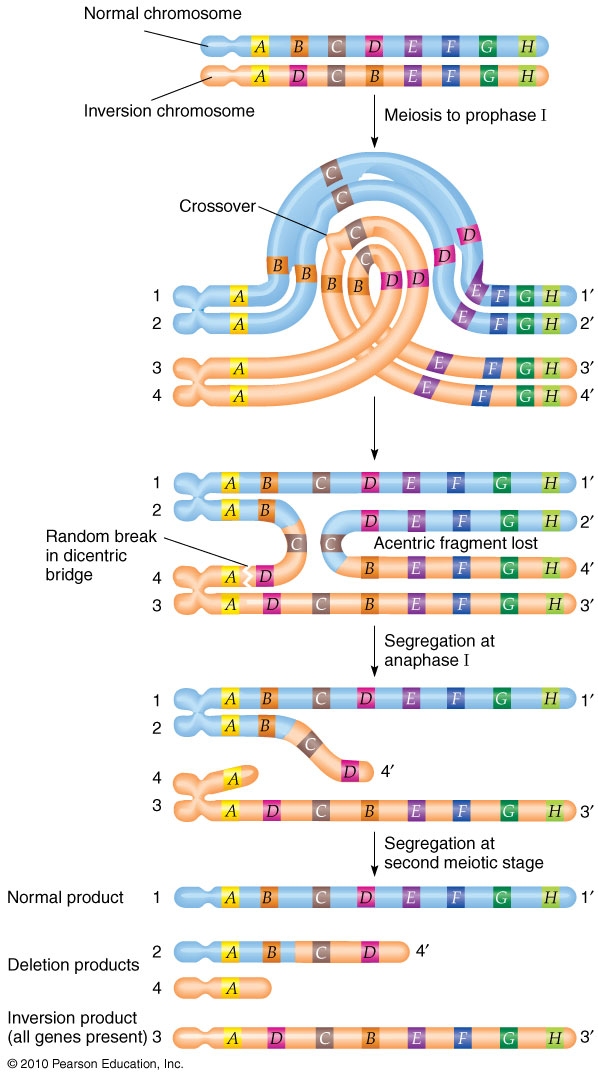
Paracentric Chromosome Inversion:
effect on crossover products
A
paracentric ("away from the center") inversion
does not include the centromere (o).
In the example, the BCD region of the standard
chromosome oABCDEFGH has been inverted, to give the
locus order oA(DCB)EFGH. After chromatid
duplication in meiosis, the paired inverted chromosome forms a
loop so that the loci pair with their homologous on the
uninverted chromosome.
Occurence
of a crossover event inside the loop produces four types of
products: a dicentric brdige,
an acentric fragment, and
two chromosomes with the standard and inverted gene
orders. Because it lacks a centromere and cannot be drawn to
either cell pole, the acentric fragment will be lost during
meiosis. Because the two centromeres of the dicentric bridge
are drawn to opposite poles, the bridge will be broken
mechanically at a random position, with resultant production
of two duplication / deletion
products in which one or more loci have been
duplicated or deleted, according to where the breakage of the
bridge occured with respect to the inverted region. Inheritance
of one of these products will result in segmental
aneuploidy.
Note
that, unlike a pericentric inversion,
not all gene loci are represented in the final products,
because those on the acentric fragment are lost. In the final
set of fragments, count the number of A versus
B C D versus E F G H loci.